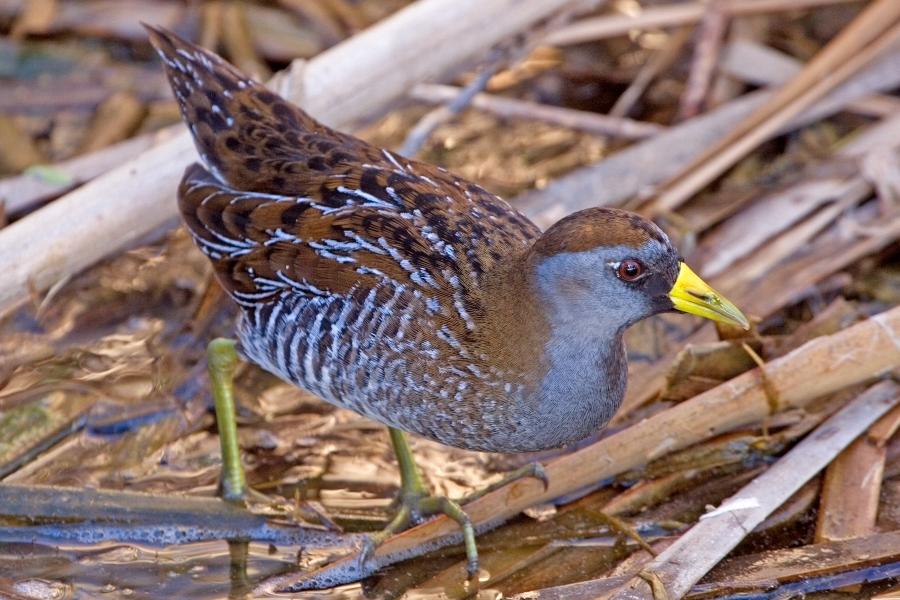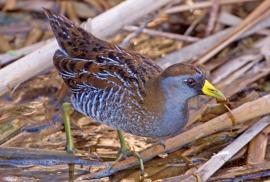Guide to Boreal Birds
Overview
The Sora is a common rail throughout its nesting area, its whinnying call familiar to anyone who has watched birds in a marsh. But it is seldom seen except by birders who wait patiently beside an opening in the reeds or who wade quietly through the cattails. These birds are especially numerous in fall and winter in southern marshes and rice fields, where they are primarily seed eaters. Although shot in large numbers every year, their high reproductive rate enables them to maintain a stable population. The greatest threat to the Sora is the destruction of the freshwater marshes where they breed: they have consequently become scarce in heavily populated areas.
Description
8-10" (20-25 cm). A quail-sized rail with short yellow bill, gray breast, and black face. Upperparts mottled brown; lower abdomen banded with black and white. Young birds in fall lack black face and have buff breast.
Voice
Most familiar call is a musical series of piping notes rapidly descending the scale; also a repeated ker-wee, with rising inflection. Near the nest, birds utter an explosive keek!
Nesting
6-15 pale yellow-buff eggs, spotted with brown, in a cup of cattails and dead leaves, usually placed in a clump of reeds in an open part of the marsh.
Habitat
Freshwater marshes and marshy ponds; rice fields and salt marshes in winter.
Range/Migration
Breeds from British Columbia east through Mackenzie to Maritime Provinces and south to Pennsylvania, Oklahoma, Arizona, and central California; winters mainly along coasts north to California and Virginia.



